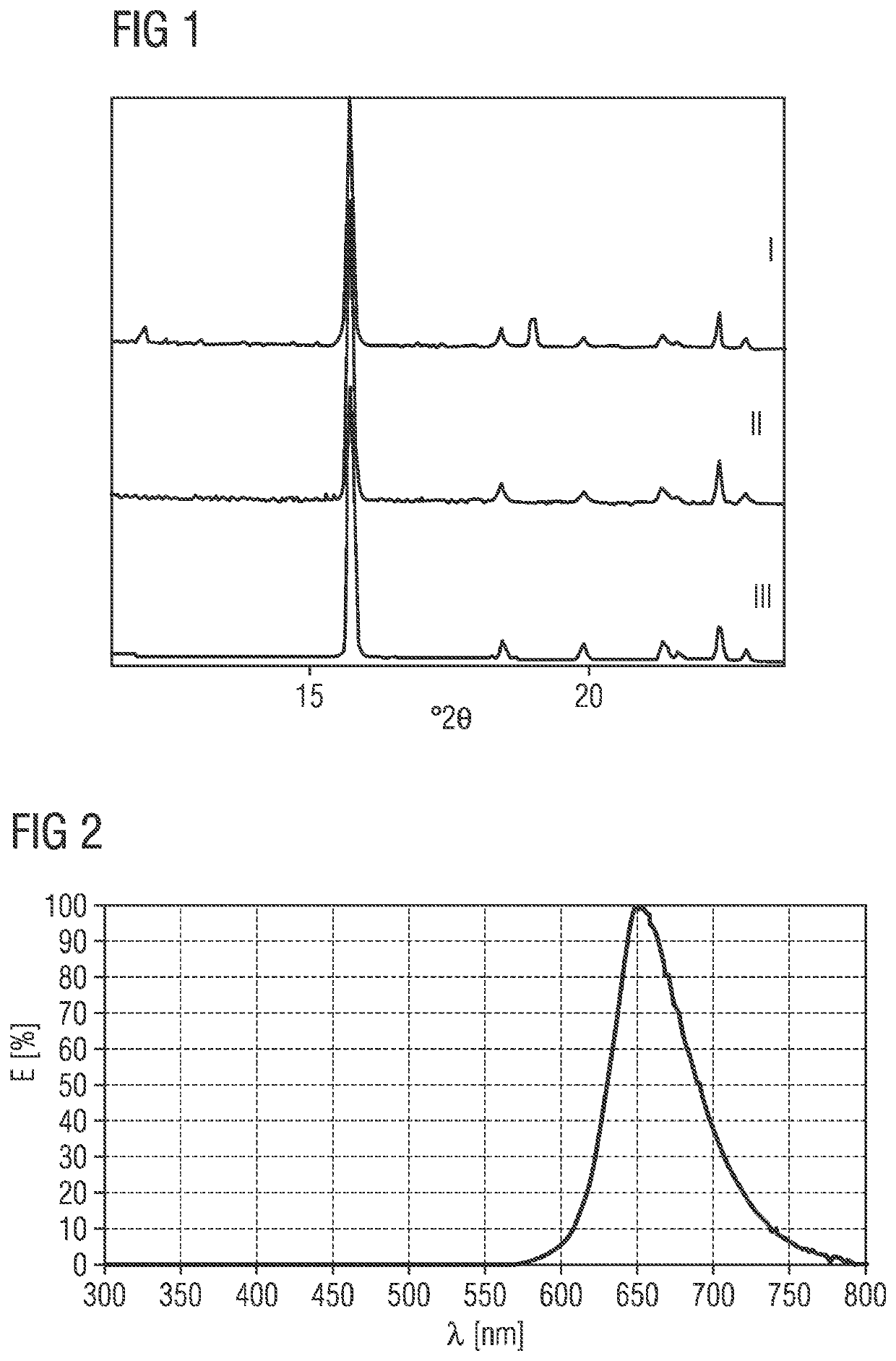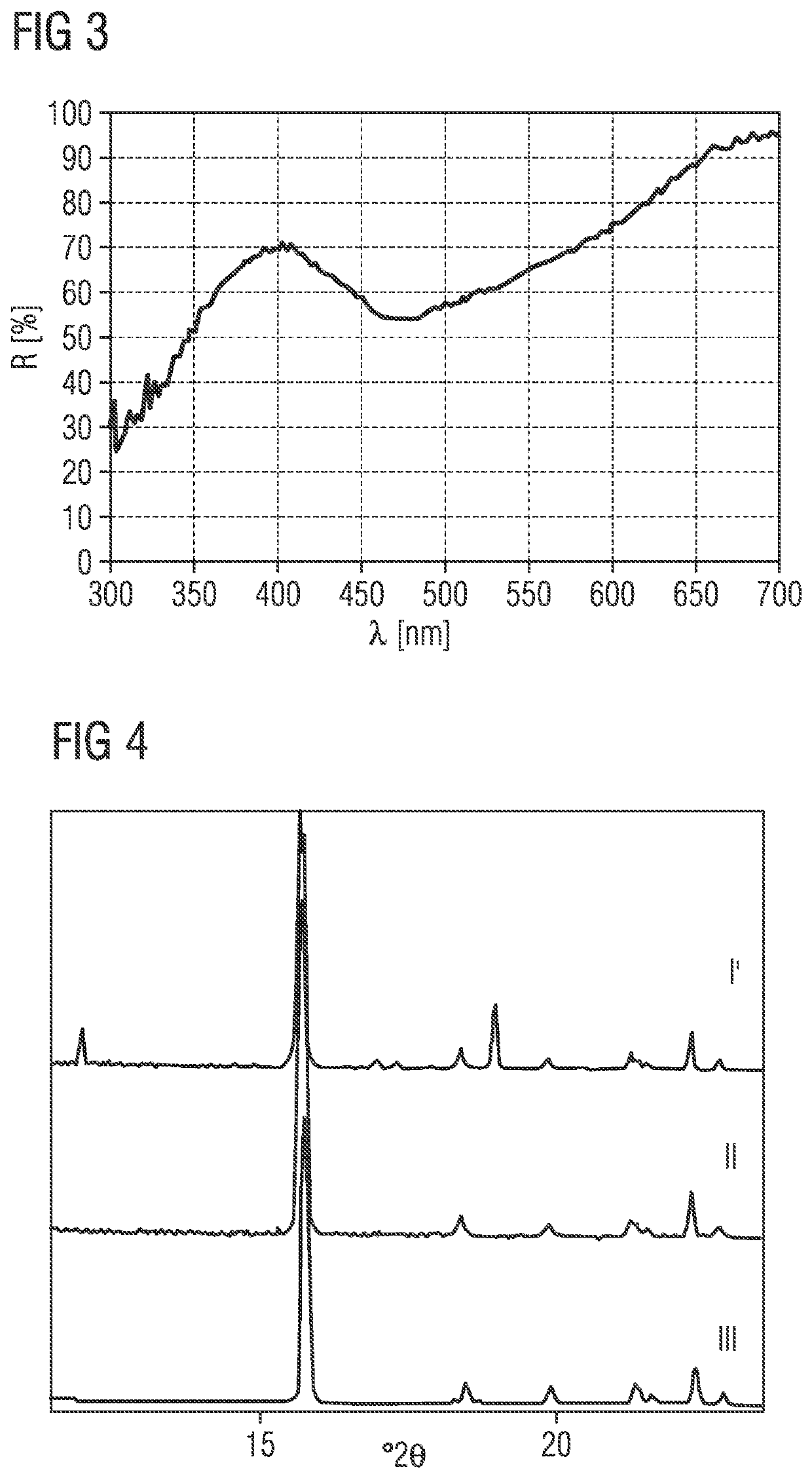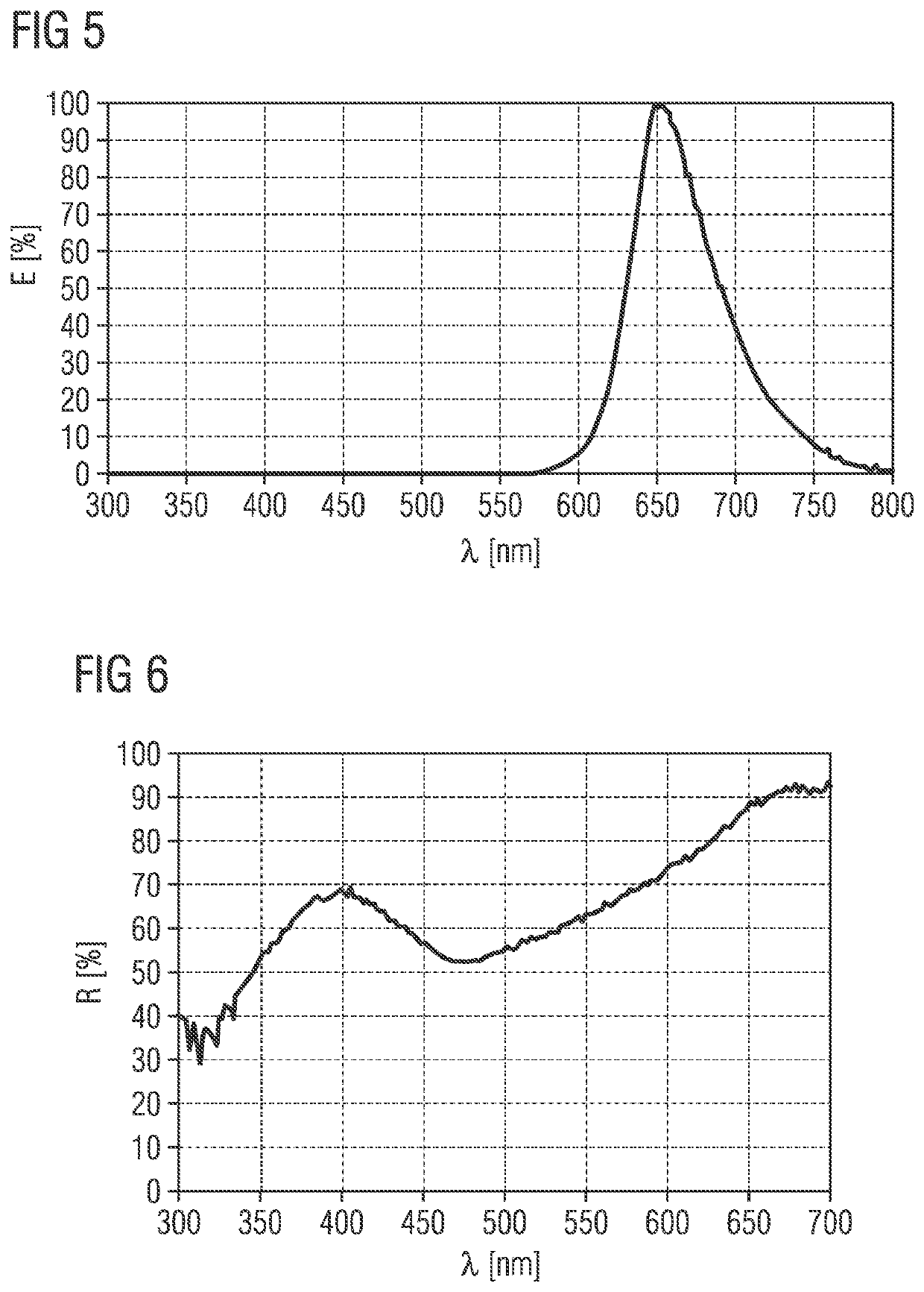Phosphor
a phosphor and phosphor technology, applied in the field of phosphor, can solve the problems of phosphor's long-term stability reduction, phosphor's quantum efficiency is lower, and the emission rate is low, and achieves the effects of low emission rate, low cost, and low cos
- Summary
- Abstract
- Description
- Claims
- Application Information
AI Technical Summary
Benefits of technology
Problems solved by technology
Method used
Image
Examples
Embodiment Construction
[0127]FIG. 1 shows three X-ray powder diffractograms using copper Kα1 radiation. The diffraction angles are plotted on the x axis in ° 2θ values and the intensity is plotted on the y axis. The X-ray powder diffractogram provided with reference sign I shows that of a first exemplary embodiment of the red-emitting phosphor according to the invention. It has two characteristic reflections in an angular range of 11.5-12.5° 2θ and in an angular range of 18.5-19.5° 2θ. These characteristic reflections of the red-emitting phosphor according to the invention have a relative intensity compared to the strongest reflection in the X-ray powder diffractogram of over 2% (absolute intensity) or over 1% (integral intensity). The intensity of these reflections is at least three times as great as the average noise in the X-ray powder diffractogram and the reflections are thus significant reflections, which may be associated with the red-emitting phosphor. The X-ray powder diffractogram provided with ...
PUM
| Property | Measurement | Unit |
|---|---|---|
| temperature | aaaaa | aaaaa |
| temperature | aaaaa | aaaaa |
| temperature | aaaaa | aaaaa |
Abstract
Description
Claims
Application Information
 Login to View More
Login to View More - R&D
- Intellectual Property
- Life Sciences
- Materials
- Tech Scout
- Unparalleled Data Quality
- Higher Quality Content
- 60% Fewer Hallucinations
Browse by: Latest US Patents, China's latest patents, Technical Efficacy Thesaurus, Application Domain, Technology Topic, Popular Technical Reports.
© 2025 PatSnap. All rights reserved.Legal|Privacy policy|Modern Slavery Act Transparency Statement|Sitemap|About US| Contact US: help@patsnap.com



